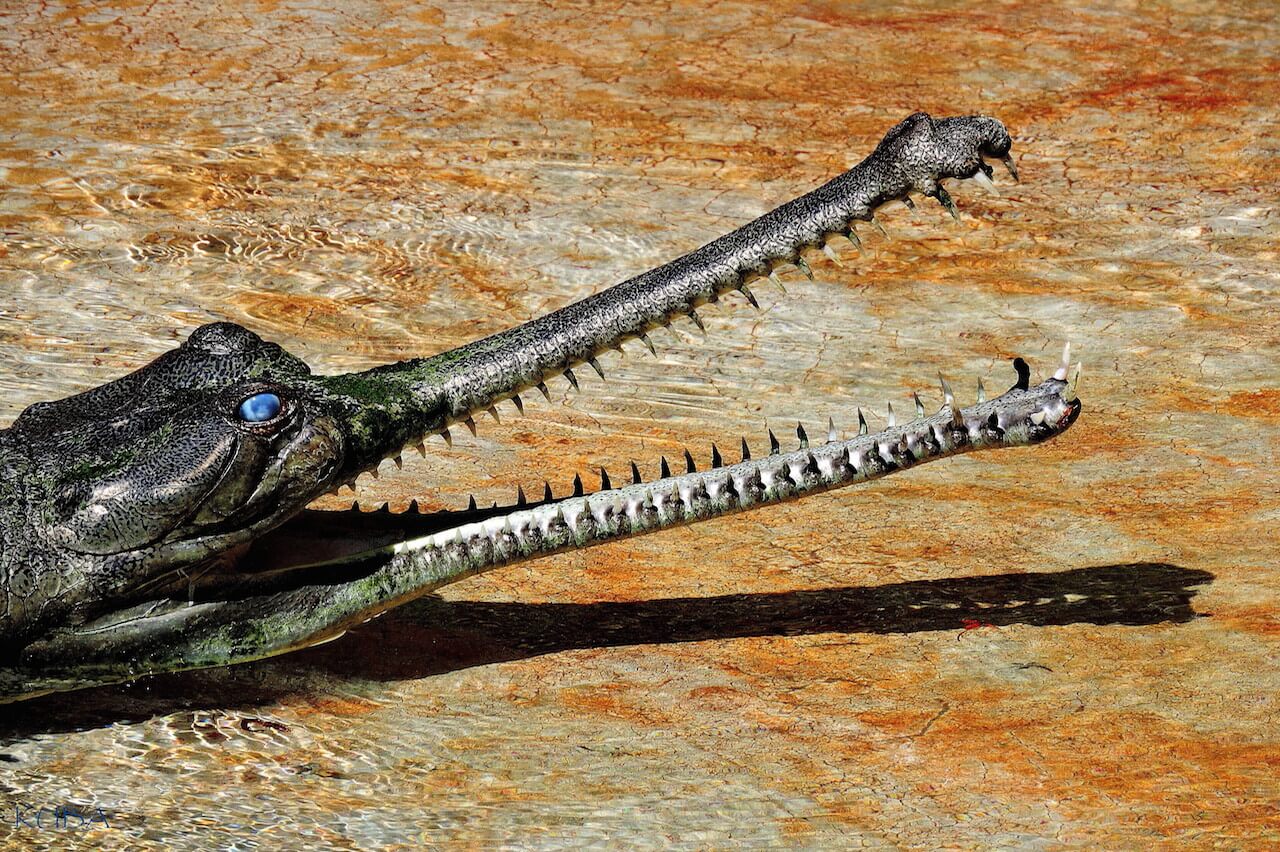Save the Gharials!!
Posted on October 31st, 2020

The monarch of Indian rivers is under severe threat. Too few of them remain in the wild and the continuing loss indicates a long-term negative effect on the ecosystem.
Once found from Pakistan to Myanmar, the reptile’s range has shrunk to two countries: India, along the Chambal, Girwa, and Son Rivers; and Nepal, along the Narayani River.
Gharials were found in the large rivers that flow in the northern part of the Indian subcontinent. These included the Indus, Ganga, Brahmaputra and the Mahanadi-Brahmani-Baitrani river systems of India, Bhutan, Bangladesh, Nepal and Pakistan. Today, their major population occur in three tributaries of the Ganga River: the Chambal and the Girwa Rivers in India and the Rapti-Naryani River in Nepal. The Gharial reserves of India are located in three States – Uttar Pradesh, Madhya Pradesh and Rajasthan.
Gharials are critically endangered in the International Union for Conservation of Nature Red List of Species. Back in the 1940s, up to 10,000 adult gharials were estimated to live around the great rivers in the north of the Indian subcontinent. Today, their total number does not exceed 200 adult individuals, of which only 20 are males. They had a rapid declination in their population by 98%.
The last major refuge of the gharial is the Chambal River in northern India, where the 90%of the remaining wild population survives.

Major Threats
Alteration of habitat
Gharials prefer sandbanks as suitable habitats. Throughout the present range of the Gharial, the rivers have been dammed, diverted for irrigation and other purposes leading to seasonal drying of once perennial rivers. Illegal sand mining and river pollution are also destroying their natural habitat.
Excessive fishing
Gharials are impacted by fishing pressure in two ways: the lack of prey due to overfishing and accidental capture in gill nets of adult and subadult individuals. Fishermen are not sympathetic to the plight of Gharials, which they view as rivals.
Poaching
Poaching is a major threat for them. Turtle poachers use longlines with up to 1000 fishhooks that ensnare young Gharials. Gharials are also persecuted by local fishermen and hunted for their ‘ghara’, penises and fat for use in traditional medicine. Finally, local tribes collect the eggs of gharials for food.
Increasing Agricultural activities
During the dry months, when the water level of the river is down, planting gourd crops and herding livestock for drinking and grazing on the sand banks and river edges has become prevalent all along the rivers which results in destruction of the habitat and negatively impacting their nesting and basking areas.

What can we do?
Once the number of wild Gharials had approached 200, triggering the much-publicized Project Crocodile. A head-starting program was so successful that it was touted as the most successful conservation project ever conducted in India and one of the most successful in the world — but little was done to involve local communities in gharial conservation and to secure wild habitats. Today we are seeing the inadequate results of that incomplete conservation strategy.
Arrangement of regular meetings and awareness programmes with relevant stakeholders, fisher folks, law enforcing agencies, fishermen, local community and other related personnel is necessary for the survival of this ancient reptile.


